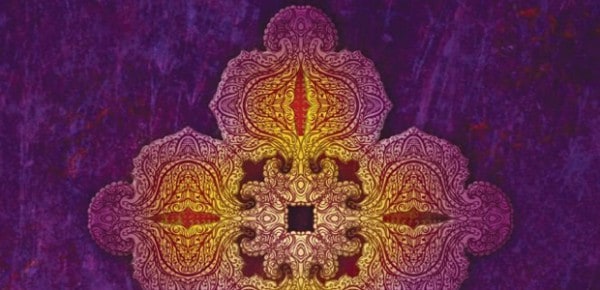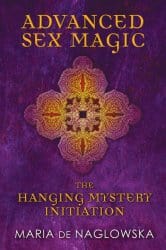
 Advanced Sex Magic: The Hanging Mystery Initiation, by Maria de Naglowska, translated by Donald Traxler
Advanced Sex Magic: The Hanging Mystery Initiation, by Maria de Naglowska, translated by Donald Traxler
Inner Traditions, 9781594774164, 119 pp. (incl. appendices, notes, bibliography and index), 2011
Originally published in French in a limited edition of 500, this is the second in a four book series translated, introduced and annotated by Donald Traxler. These texts outline the mysteries and initiation system of the order founded by Maria de Naglowska (1883 – 1936), the Brotherhood of the Golden Arrow.
The “divine mission” of the Brotherhood was nothing less than the redemption of Satan, which Naglowska saw as the redirection of “the Spirit of Evil onto the good path.”1 Her spiritual formula viewed Satan not as an external being, but as an indwelling nature to be managed or conquered. Jesus and Judas are seen as equal, and both necessary for the crucifixion to occur. The hanging of Judas is central to the philosophy behind Hanging Mystery employed in her spiritual system. Naglowska prophesized a new age, which she called the Third Term of the Trinity, overseen by the work of the Magnificent Invisible Heroes, sometimes called the Magnificent Invisible Knights, for which the Hanging Mystery serves as an initiatory test.
I get the feeling that the title of the present text, Advanced Sex Magic, was decided by the publisher and not the translator, as Traxler refers to the book by its French transliteration, The Hanging Mystery, which is here reduced to a subtitle. But sex sells, or so the thinking goes. Yet Naglowska’s sex scenes — for there’s nothing else to call these highly romanticized fantasies — are surprisingly passive, especially for the women involved.
Before the potential “knights” are tested, a virgin priestess is bathed and prepared under the observation of “mages,” apparently not because they’re voyeurs, but to ensure “no evil spell should be cast.” It’s the kind of lurid nonsense you’d expect from a dime store novel, not a new religion with an influential following of intellectuals and artists in Parisian society in the 1920s and ’30s. Or perhaps this is precisely the sort of thing on which those novels were based?
For a spiritual system that views sex as a central to its rites, it seems more than a little morbid that women are denied sexual pleasure. Instead they are expected to remain “cold and mute” like the moon. She seems oddly out of touch with female masturbation (no pun intended), viewing it as something only women sexually active with another partner engage in, when, of course, it is a practice that virgins and coupled (or grouped) women engage in to produced the “localized pleasure” Naglowska demonizes. If a priestess does experience an orgasm, she believes it brings “disgrace.”2
The sex roles are set, and cannot be breached, with men attaining power, and women losing their freedom and individuality. If the rite is successful, the highest honour the priestess can achieve is to become the spiritual wife, or “bride of her Tested Knight,”3 who promises to obey her “knight” in all things. If the “knight” fails to return, the priestess is sent into mourning for the rest of her life, and is kept separate from the remaining priestesses.
The underlying philosophy is fascinating, perhaps especially so if you’re a heterosexual male, yet it’s no wonder the “Brotherhood” never really got off the ground. Few woman would want to be subjugated in this way, especially during a period when women’s suffrage was highly visible and in full swing. Women around Europe and North America were able to vote on their own for the first time, and Naglowska presents a spiritual system which limits their movement and self-expression. It’s an odd counterpoint, and the brief notes Traxler offers in each introduction are excellent, but I’d love to see a full length biography of Naglowska to better understand her, the origins of her philosophy, and what effect it had on the people around her.
The language she uses is often beautiful, particularly her depiction of the tree of humanity, but it can also seem highly abstract for one not familiar with her mode of thinking. It is here again Traxler’s notes prove essential in disentangling the various threads she weaves together in her highly unorthodox symbolic system.
It’s best to read the books in this series sequentially, beginning with The Light of Sex,4 as each builds upon the other, though with Traxler’s footnotes the reader will better understand what she’s building towards.
Donald Traxler’s work in translating and bringing Maria de Naglowska’s work out of obscurity is admirable, and his notes and biographical commentary are invaluable. For all the flaws of her system, Naglowska was a remarkable woman, and these books are definitely worth investigating.
- p. 3 [↩]
- p. 57 [↩]
- p. 85 [↩]
- My review on Spiral Nature here. [↩]







